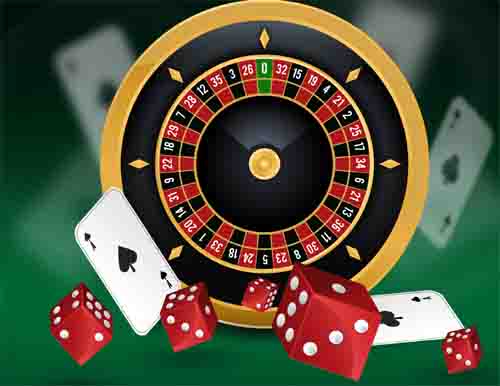Ever since the Roulette wheel was invented in 1765, people have searched for winning formulas and lucky charms to give them a winning edge.
We thought we would explore the Mathematical elements, with a view to identifying and sharing the results of our study.
As Roulette is the oldest casino game currently being played around the world, where better to start?
Firstly we have opted to look at a typical roulette wheel, with numbers running from 1 to 36.
Great Mathematicians such as Albert Einstein have looked at the roulette wheel and announced that “No One can Win” In the long term. He quoted the following “No One can win at Roulette unless they steal the money from the roulette table when no one is looking”. An honest and I dare say accurate way of defining the mathematical equation of losing. Of course, there is always a chance, a much-loved probability amongst the typical gambler.
The Roulette Image is courtesy of Casino Football – A UK-based mobile roulette and slot game provider.

Mathematics plays a significant role in understanding and developing strategies for casino games like roulette. While roulette is fundamentally a game of chance, mathematical concepts can help players analyze probabilities, optimize their betting strategies, and manage risks.
Understanding the Basics of Roulette Mathematics
Roulette consists of a spinning wheel with numbered slots. The numbers range from 0 to 36 in European roulette (37 slots) and 00 to 36 in American roulette (38 slots). Key mathematical insights include:
- House Edge:
- European roulette: 2.7% (due to the single zero).
- American roulette: 5.26% (due to the addition of a double zero).
- Odds of Winning:
- Single number bet in European roulette: 137≈2.7%\frac{1}{37} \approx 2.7\%.
- Single number bet in American roulette: 138≈2.63%\frac{1}{38} \approx 2.63\%.
Probability and Outcomes
Understanding probabilities is critical for analyzing roulette outcomes:
- Single Number Bet:
Probability = 137\frac{1}{37} (European) or 138\frac{1}{38} (American).
Expected payout: 35:1. - Even-Money Bets (e.g., red/black, odd/even):
Probability (European) = 1837≈48.65%\frac{18}{37} \approx 48.65\%.
Probability (American) = 1838≈47.37%\frac{18}{38} \approx 47.37\%. - Combination Bets (e.g., splits, corners):
Probability is calculated by dividing the number of winning slots by the total slots.
Expected Value (EV)
The EV helps calculate the average outcome of a bet:
EV=(Winning Probability×Payout)−(Losing Probability×Bet)\text{EV} = (\text{Winning Probability} \times \text{Payout}) – (\text{Losing Probability} \times \text{Bet})
For a single number bet in European roulette:
EV=(137×35)−(3637×1)=−0.027 (or −2.7%)\text{EV} = \left(\frac{1}{37} \times 35\right) – \left(\frac{36}{37} \times 1\right) = -0.027 \, (\text{or } -2.7\%)
The negative EV reflects the house edge.
Betting Systems
Mathematics underpins many roulette betting systems, which aim to optimize play. While no system eliminates the house edge, it can influence short-term outcomes:
Martingale System
- Concept: Double your bet after every loss, aiming to recover losses with a single win.
- Risk: Requires a large bankroll and is limited by table maximum bets.
- Math: After nn losses, the required bet = Initial Bet×2n\text{Initial Bet} \times 2^n.
Fibonacci System
- Concept: Follow the Fibonacci sequence for bet amounts after losses (1, 1, 2, 3, 5, etc.).
- Math: This reduces the rate of increase in bet sizes compared to Martingale, lowering risk.
D’Alembert System
- Concept: Increase your bet by one unit after a loss and decrease it by one unit after a win.
- Risk: Slower progression minimizes losses but doesn’t guarantee recovery.
Reverse Systems
- Reverse Martingale (Paroli): Increase bets after wins instead of losses to maximize streaks.
Statistical Insights
- Law of Large Numbers: Over a large number of spins, outcomes will trend toward the probabilities (e.g., ~48.65% for red/black in European roulette).
- Gambler’s Fallacy: Each spin is independent, and past outcomes (e.g., consecutive reds) do not influence future spins.
Managing Bankroll
Mathematics helps players manage their bankroll effectively:
- Budget Allocation: Divide your total bankroll into small units for consistent betting.
- Risk Assessment: Use probability calculations to decide bet sizes and minimize losses.
Simulation and Analysis
- Monte Carlo Simulations: Simulate thousands of spins to predict outcomes and test betting strategies.
- Data Analysis: Track spin outcomes to analyze patterns (though true randomness in roulette negates trends).
Roulette Variants
- Mathematics can help compare variants:
- European roulette offers better odds due to a lower house edge.
- Mini-roulette (12 slots plus a zero) increases volatility and house edge.
While mathematics can’t overcome the inherent house edge in roulette, it equips players with tools to make informed decisions, understand risks, and experiment with strategies. Success in roulette is primarily based on luck, but mathematical insights ensure a strategic approach to this timeless game of chance.
The conclusion on Mathematical chances of winning roulette may be minimal, however, there are various resources, that have highlighted ways of at the very least increasing your chances of winning.
One such resource can be found in the following Video on YouTube, of which has been viewed hundreds of thousands of times and does host some informative factual data:
Other systems such as the Martingale System are reportedly a very clever way of increasing the chances of winning. Whatever way you decide, the team here at Accessible Maths urge you to gamble responsibly, within your means. It should be treated as a fun game, and not a money-making strategy to live off. This is our personal opinion and one that as a team we collectively agree on.